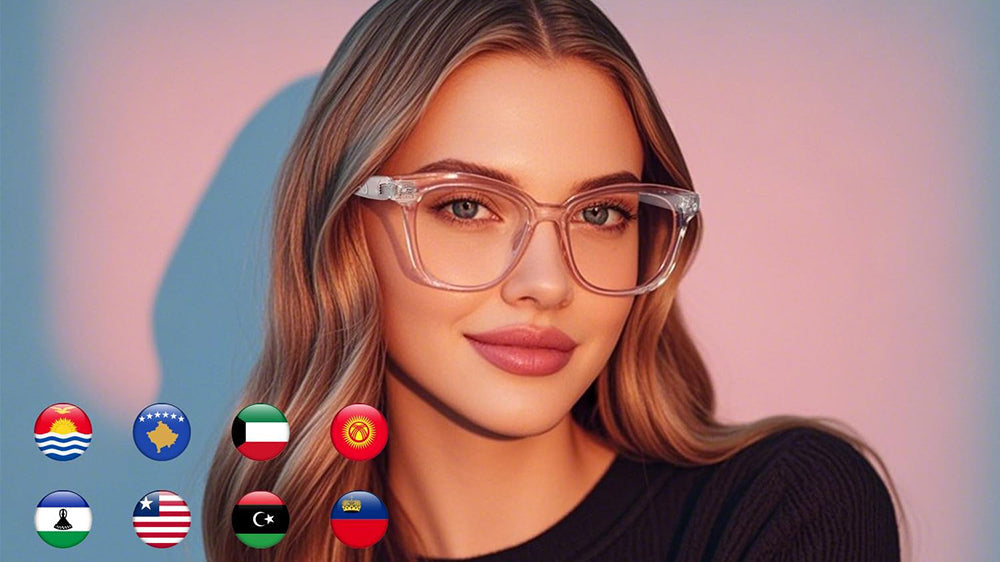Olvídate de las complejas proyecciones de ciencia ficción. Gafas de traducción con IA Los audífonos que llegan hoy al mercado ofrecen una solución práctica y poderosa para romper las barreras del idioma, basándose en la tecnología familiar de los auriculares traductores pero agregando una experiencia de audio única de manos libres.
Cómo ellos De hecho Trabajo: más sencillo de lo que piensas
-
Escucha el mundo: Los micrófonos incorporados en los marcos de las gafas captan el habla que ocurre a tu alrededor (alguien hablando, un anuncio).
-
La aplicación hace el trabajo pesado: El audio capturado se envía (generalmente a través de Bluetooth) a la aplicación de traducción complementaria en su teléfono inteligente emparejado.
-
Traducción de IA: La aplicación utiliza potentes motores de traducción (como Google Translate, DeepL, etc.) para convertir el habla extranjera al idioma elegido.
-
Entrega en dos partes:
-
A tus oídos: El audio traducido se reproduce a través de pequeños altavoces incrustados en las patillas de las gafas , directamente en tus oídos.
-
A tu teléfono: El texto traducido aparece en la pantalla de tu teléfono inteligente dentro de la aplicación.
-
Piense en ellos como si fueran auriculares traductores integrados en gafas, con su teléfono como pantalla visual.
¿Por qué elegir gafas en lugar de auriculares? Las verdaderas ventajas
-
Audio manos libres, siempre listo: ¡La mayor ventaja! Las gafas se ajustan perfectamente a la cara. Olvídate de tener que ponerte los auriculares cuando una conversación empieza de repente. El audio de la traducción se reproduce al instante por las patillas.
-
Conciencia de la situación: A diferencia de los auriculares, que bloquean el sonido ambiental, los altavoces para gafas suelen dejar pasar algo de ruido ambiental. Te mantienes más atento a tu entorno mientras escuchas la traducción.
-
Comodidad para uso prolongado: Muchas personas encuentran que usar anteojos es más cómodo durante todo el día que tener auriculares en los oídos durante horas, especialmente durante viajes o reuniones largas.
-
Escucha discreta: El audio de los altavoces del templo generalmente se dirige hacia su Los oídos son menos audibles para las personas cercanas que los altavoces del teléfono. Es más discreto que sostener el teléfono cerca del oído.
-
Referencia visual (en su teléfono): Mientras que el audio es manos libres en tus oídos, el texto En tu teléfono, te ofrece un valioso respaldo visual para términos complejos, nombres o si te perdiste una palabra. Puedes consultarlo cuando lo necesites.
-
Multitarea: Tus manos quedan libres para gesticular, tomar notas, comer o sujetar el equipaje mientras escuchas la traducción.
Realidad actual: qué esperar
-
La tecnología: Depende en gran medida de la potencia de procesamiento y la conexión de datos de tu smartphone (para la traducción en la nube). Las gafas se encargan de la captura y reproducción de audio.
-
La pantalla: Aparece el texto de la traducción en la pantalla de tu teléfono , no Mágicamente en las lentes. Algunas aplicaciones podrían ofrecer modos de realidad aumentada (RA) que usan la cámara del teléfono para superponer texto en la vista del mundo real. en el teléfono , pero las gafas en sí no proyectan sobre los lentes.
Consideraciones clave
-
Duración de la batería: La duración de la batería de las gafas generalmente es buena para la reproducción de audio (a menudo más de 8 horas), pero teléfono La batería se agotará más rápido si se ejecuta la aplicación de traducción constantemente.
-
Privacidad de audio: Aunque son más discretos que un altavoz de teléfono, los altavoces de templo no son completamente privados. Las personas muy cercanas podrían percibir una leve pérdida de audio.
-
Dependencia del teléfono: Tú debe Tenga su teléfono emparejado, cargado y conectado a Internet (para la traducción a la nube) para que funcione completamente.
-
Diseño: Parecen gafas normales (o gafas de sol), lo que para algunos supone una importante ventaja de estilo respecto a los auriculares.
-
Ruido: La eficacia puede disminuir en entornos muy ruidosos, al igual que ocurre con los auriculares.
¿Quién se beneficia ahora?
-
Viajeros: Navegue por aeropuertos, pregunte direcciones, pida comida: escuche las traducciones al instante sin necesidad de buscar auriculares.
-
Profesionales de negocios: Participe en conversaciones multilingües de forma más natural durante reuniones o eventos de networking, con manos libres.
-
Estudiantes de idiomas: Sumérgete escuchando traducciones en tiempo real mientras ves el contexto.
-
Cualquiera que necesite manos libres: Ideal para situaciones en las que tienes las manos ocupadas (compras, llevar bolsas, comer).
-
Personas a las que no les gustan los auriculares: Una alternativa cómoda para recibir traducciones de audio.
El futuro y el potencial
Si bien las proyecciones de lentes siguen siendo futuristas, actual Las gafas traductoras con IA suponen un avance significativo en comodidad. Las futuras mejoras probablemente se centrarán en:
-
Mejor traducción en el dispositivo: Reducir la dependencia y la latencia del teléfono.
-
Calidad de altavoz y privacidad mejoradas: Mejora la claridad del audio y minimiza las fugas de sonido.
-
Integración más estrecha de aplicaciones: Experiencia de usuario más fluida entre las gafas y el teléfono.
-
Potencial para señales visuales básicas: Tal vez Indicadores LED simples en el marco para el estado (escucha/traducción), pero el texto complejo en los lentes aún está en camino.
En resumen:
Las gafas de traducción con IA de hoy no se centran en imágenes de ciencia ficción. Se centran en... entregando el habla traducida directamente a tus oídos, con manos libres, desde un dispositivo que ya llevas puesto en la cara, Mientras tu teléfono proporciona el respaldo de texto. Si valoras la comodidad, la visibilidad y la facilidad de uso antes que tener texto visible, estos auriculares ofrecen una alternativa atractiva y práctica a los auriculares traductores.
¿Listo para probar la traducción con manos libres? Descubre la generación actual de gafas traductoras con IA . ¡Ten tu teléfono a mano para el texto!
¿Qué opinas? ¿Te atrae más el audio manos libres que tener que mirar el teléfono? ¡Comparte tu experiencia abajo!


Compartir:
¿Qué es una pantalla de monitor para selfies?
Descarga de la aplicación para auriculares de traducción A2pro/Q16pro/A9pro/M75/M62
1 comentario
What is the price?